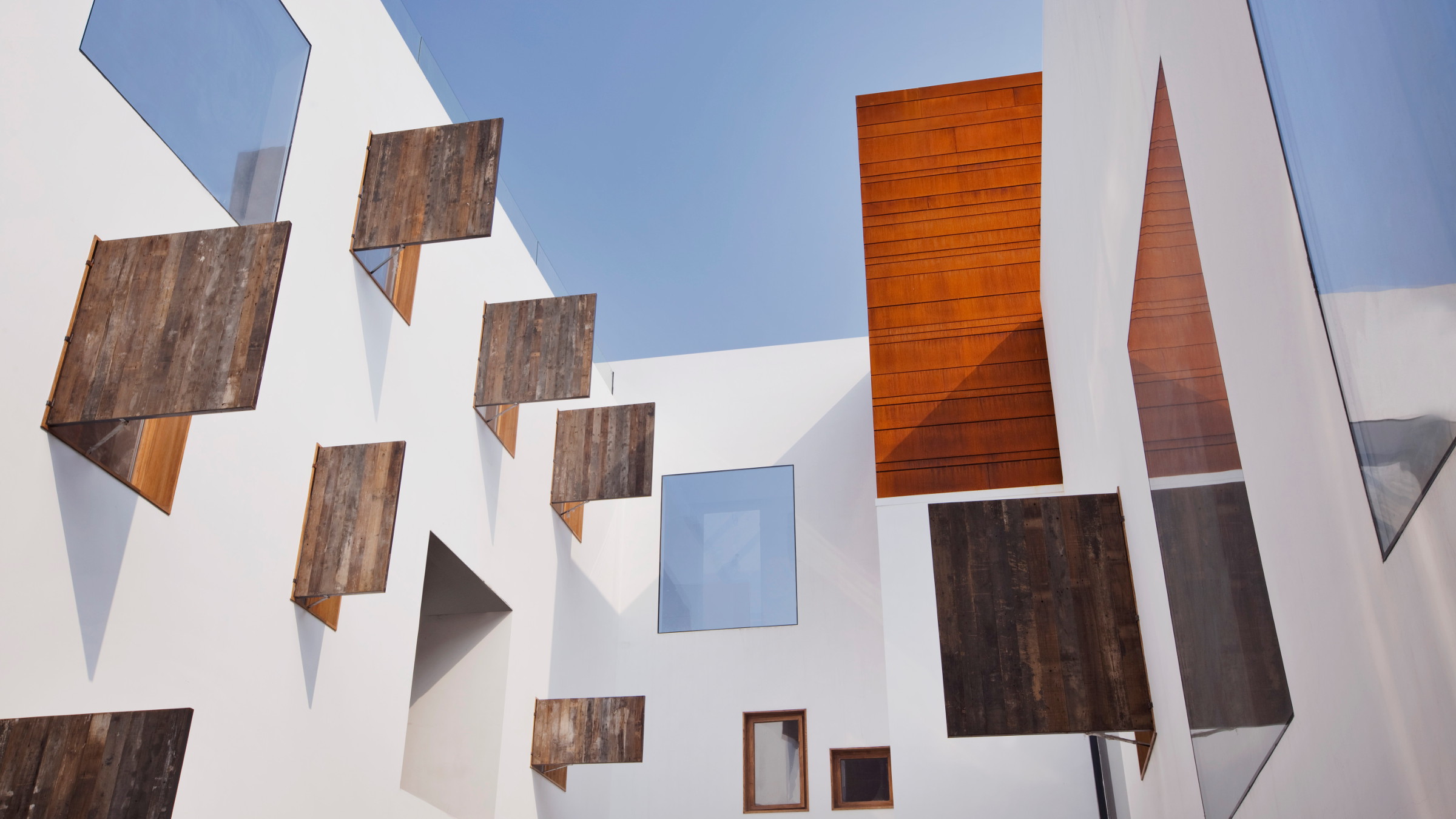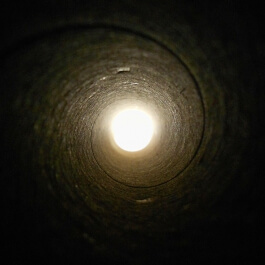Living
From Blight To Boon: The Top Repurposed Industrial Spaces
Slide Nr 1As more and more countries enter the post-industrial age and goods are produced in a smaller number of factories, further away from urban centres, one question remains: What to do with our crumbling relics of industrialisation? These repurposed industrial ruins are inspiring examples of the hidden potential just waiting to be uncovered in factories, warehouses and other mass-manufacturing structures. [Photo: Wunderland Kalkar]
0/20
Living
From Blight To Boon: The Top Repurposed Industrial Spaces.
Slide Nr 2Of course, any city currently vying for the title of European capital of cool (aka. the next Berlin) simply must have a former-factory-turned-creative-space. A former textile plant in Lisbon has been transformed into a large, friendly, bustling cluster of offices, restaurants, art galleries and shops. Now known as LX Factory, its highlights include a bookshop lined with towering shelves around – how fitting – a decommissioned printing press. [Photo: Pedro Machado]
1/20
Living
From Blight To Boon: The Top Repurposed Industrial Spaces.
Slide Nr 3Vienna’s Gasometers, four gas storage towers built on what was then the outskirts of the city, were once the largest of their kind. They served their original purpose for almost 100 years before receiving a massive overhaul. Today, each of the towers houses a completely unique modern interior within its red brick facade. Designed by four different architecture firms, they contain flats and offices, but also a shopping centre, music hall and academy. [Photo: Wikimedia Commons]
2/20
Living
From Blight To Boon: The Top Repurposed Industrial Spaces.
Slide Nr 4An industrial ruin of truly epic proportions, the Zollverein Coal Mine Industrial Complex in Essen, recognised as World Heritage Site by UNESCO, is one of the most important attractions on Germany’s Industrial Heritage Trail. The complex was already a heritage site prior to shutting down in 1986. Today, visitors find several museums, a bike trail, public pool and many more attractions. Some reflect the area’s coal mining history, others point towards a greener, more creative future. [Photo: © Jochen Tack / Stiftung Zollverein]
3/20
Living
From Blight To Boon: The Top Repurposed Industrial Spaces.
Slide Nr 5One thing most industrial heritage parks have in common: Climbing the crumbling walls is strictly VERBOTEN! Not in Landschaftspark Duisburg-Nord, where a former iron ore mine has been turned into a recreational and cultural landscape, complete with climbable structures. The German Alpine Club has set up a series of climbing routes for all ages and abilities. Even though climbers scale walls, bunkers and towers, thanks to nature slowly reclaiming its territory, it can feel just like tackling Alpine peaks. [Photo: Thomas Berns]
4/20
Living
From Blight To Boon: The Top Repurposed Industrial Spaces.
Slide Nr 6It’s hard to think of a less suitable location for an amusement park than a nuclear reactor. Sure, kids should be kept as far away from radiation as possible, but the German nuclear facility that houses the Wunderland Kalkar theme park, hotel and business centre was never operational. To avoid prohibitively expensive demolition, the state sold it to a private investor. The park is filled with rides and amusements for kids of all ages, but the greatest attraction is the 58-metre high vertical swing inside the cooling tower.
5/20
Living
From Blight To Boon: The Top Repurposed Industrial Spaces.
Slide Nr 7By contrast, a theme park inside a former salt mine sounds a lot less menacing, but looks way more eerie. Deep in the mining shafts and caves created by centuries of mining activity in Turda, a weird and wonderful assortment of playgrounds, fun fair attractions and sports facilities entertain visitors. The Romanian mine, which was retired pre-WWII, has since served as bunker, storage facility and today also offers historical tours and health facilities. Of course, those visiting the recreational areas are also likely to benefit from the healthy microclimate within the mine.
6/20
Living
From Blight To Boon: The Top Repurposed Industrial Spaces.
Slide Nr 8Thanks to Rotterdam harbour retiring older docks in favour of deeper, more modern replacements further from the city centre, the Dutch city has scores of heritage buildings in prime waterfront locations. The Fenix Food Factory, one of the first and most enduringly successful examples of adaptive reuse, spurred the revival of an entire district. The former warehouse now offers a hip, indie alternative to the famous Market Hall. Its success has had a positive effect on the whole area.
7/20
Living
From Blight To Boon: The Top Repurposed Industrial Spaces.
Slide Nr 9When a rerouting of the Skjern River in Western Denmark proved ecologically disastrous and the land reclamation scheme largely unsuccessful, the river was restored to its natural, meandering flow, wetlands reinstated, wild flora and fauna returned. But instead of removing the pump stations that were the most visible remnants of the misguided scheme, local councils worked with Danish architects to reimagine the stark buildings as exhibition and event spaces. Their viewing platforms offer views of the revived landscape. [Photo: Rasmus Norlander]
8/20
Living
From Blight To Boon: The Top Repurposed Industrial Spaces.
Slide Nr 10A former sugar warehouse in Lyon was reborn as La Sucrière, the venue for the city’s contemporary art biennial in 2003. It also serves as an exhibition and events venue and has become a cultural focal point within the La Confluence quarter. This ambitious urban redevelopment of the former docklands, situated where the Saône and Rhône rivers meet, aims to create “a smart and sustainable city” with “existing and new structures.” [ Labyrinth of Memory 2012. Photo © Jules Roeser, courtesy La Sucrière GL events]
9/20
Living
From Blight To Boon: The Top Repurposed Industrial Spaces.
Slide Nr 11Liverpool has already saved some architectural relics dating back to its time as industrial powerhouse of the British Empire and gate to its colonies. However, much remains to be done if its status as UNESCO World Heritage Site is to be retained. The latest mammoth project: turning the Tobacco Warehouse at Stanley Dock, the largest brick warehouse in the world, into luxury flats and shops. The completed complex is set to become part of a new creative district dubbed Ten Streets.
10/20
Living
From Blight To Boon: The Top Repurposed Industrial Spaces.
Slide Nr 12London already has experience with adaptive reuse of a power station on the Thames. The highly successful reinvention of Bankside Power Station as TATE Modern turned the building’s industrial heritage into a major feature, with the vast turbine hall hosting some of the most spectacular exhibitions of the past decades. A few kilometres upriver, Battersea Power Station is currently undergoing a much larger overhaul, with an entire urban quarter popping up around the all but derelict red brick building, which has been painstakingly (and expensively) refurbished. [Photo: Jean-Francois Phillips/Flickr]
11/20
Living
From Blight To Boon: The Top Repurposed Industrial Spaces.
Slide Nr 13Many industrial buildings find new life as museums. From the above-mentioned TATE Modern in London, and Garage Museum of Contemporary Art in Moscow, to the Massachusetts Museum of Contemporary Art (to name but a few), former factories make excellent homes for contemporary art. The latest addition to the sizeable list of museums in repurposed industrial structures is Cape Town’s Zeitz Museum of Contemporary Art Africa (MOCAA), housed in towering grain silos on the Victoria & Alfred Waterfront. [Photo: Iwan Baan]
12/20
Living
From Blight To Boon: The Top Repurposed Industrial Spaces.
Slide Nr 14In theory, as economies develop, primary industries like agriculture are replaced by the secondary sector (manufacturing) and finally by tertiary sector service jobs. Hong Kong Value Farm is possibly the most impressive illustration of the urban farming trend turning that theory upside down. In its current incarnation, the nonprofit has turned a former factory in nearby Shenzhen into a farm, bringing a much-needed slice of nature to the industrial city.
13/20
Living
From Blight To Boon: The Top Repurposed Industrial Spaces.
Slide Nr 15It’s the reclaimed railway that launched a thousand council proposals. Since Manhattan’s High Line went from abandoned elevated freight railway to neighbourhood park, tourist attraction and Instagram hotspot, cities around the world are rushing to discover adaptable industrial infrastructure, often hiding in plain sight. Friends of the High Line, the nonprofit that got the ball rolling in New York, has founded the High Line Network to support “infrastructure reuse projects – and the people who are helping them come to life.” [Photo: Wikimedia Commons]
14/20
Living
From Blight To Boon: The Top Repurposed Industrial Spaces.
Slide Nr 16Detroit has become a byword for post-industrial gloom, with urban explorers and photographers delighting in the decaying monuments of its Motor City heyday. While the grandiose derelict buildings hold a morbid appeal, there are also examples of successful adaptive reuse. The Russell Industrial Center, formerly home to a Ford Motor Company supplier, now houses galleries, art and music studios, as well as hosting events.
15/20
Living
From Blight To Boon: The Top Repurposed Industrial Spaces.
Slide Nr 17The City of Seattle was decades ahead of its time when it bought a coal gasification plant on Lake Union’s shore in 1962 and reopened it as a public park in 1975. The reclaiming of an industrial space wasn’t revolutionary in itself, but retaining some of the industrial structures was highly unusual. Then, many considered the convoluted steel silos, pipes and rods mere eyesores, now they look like they could just as well be a contemporary art installation. [Photo: Seattle Parks & Recreation]
16/20
Living
From Blight To Boon: The Top Repurposed Industrial Spaces.
Slide Nr 18On Vancouver’s Granville Island, the transition from industrial to creative and recreational use has been gradual. Cement silos on False Creek are actually still in use as part of the only remnant of the island’s industrial past, but their painted exterior hints at its colourful present. Mills, factories and warehouses have been slowly taken over by theatres, arts and craft studios, and a bustling indoor market. [Photo: Granville Island]
17/20
Living
From Blight To Boon: The Top Repurposed Industrial Spaces.
Slide Nr 19Current talk about factories in Mexico is largely focused on whether international companies should be building more of them. We’d rather focus on the remnants of the country’s long, proud history of textile production. Although much of Mexico’s textile trade has been priced out of competition, retired factories have been repurposed across the country. The La Aurora Cultural Arts and Design Center in San Miguel de Allende – which houses artist and design studios, galleries and shops – is an excellent example.
18/20
Living
From Blight To Boon: The Top Repurposed Industrial Spaces.
Slide Nr 20Adaptive reuse isn’t always limited to breathing new life into an existing structure. Sometimes it means integrating an old building into a much larger, more modern construct. Examples of this curious type of architectural collage are Petco Park in San Diego, where the heritage-listed Western Metal Supply Co. Building was integrated into the new baseball stadium, and Melbourne Central Shopping Centre, built around Coop’s Shot Tower, which now sits within a glass-covered plaza and houses shops and a museum.
19/20
Living
From Blight To Boon: The Top Repurposed Industrial Spaces.
Slide Nr 2220/20















Sorry, the comment form is closed at this time.